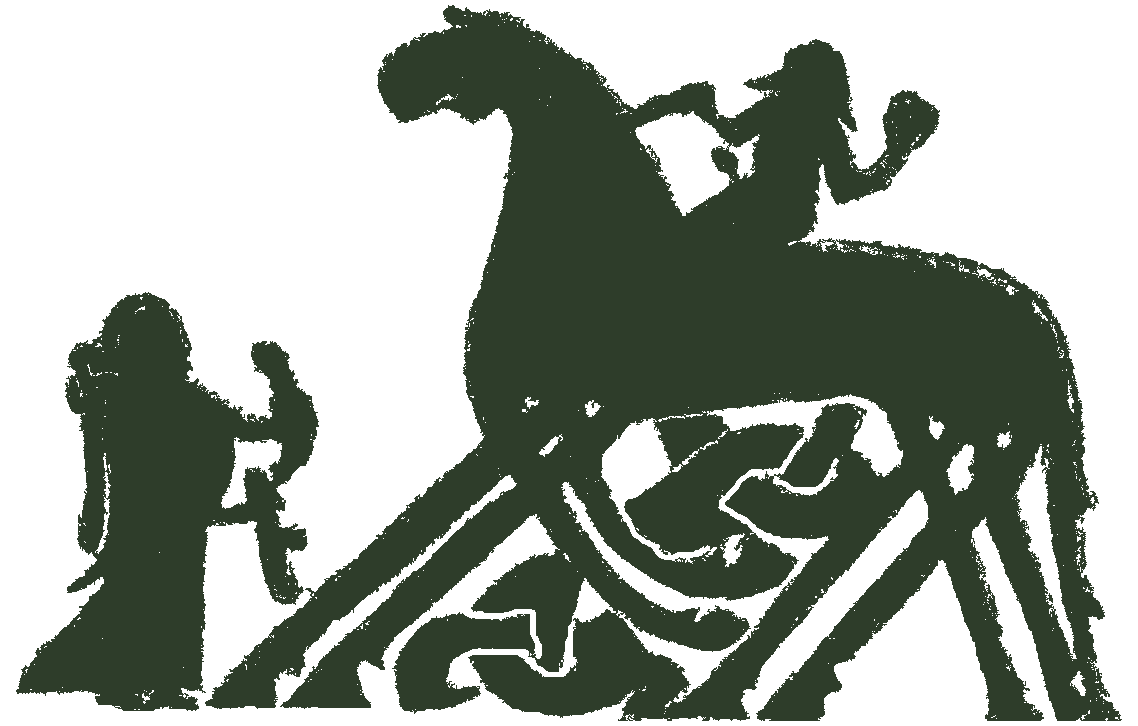in progress
This passage from Gylfaginning speaks of the end of days, the Ragnarök, of the final battles between the gods and other beings. It concludes with how the world will rise again.
text
[excerpt from] Gylf ch. 51b
51b.
Þá mælti Gangleri: "Hver tíði... | Then spoke Gangleri: 'What in... |
[status: unverified copy]
commentary
context
Gylfaginning, which is part of Snorra Edda, was composed in Iceland in the 13th century, and holds the stories of many of the Pre-Christian myths of northern Europe. It is believe to have been composed by the Icelander Snorri Sturlusson. Snorra Edda consists of three separate parts, Gylfaginning, Skaldskápamáland Háttatal, all functioning together as a greater work and guide for the aspiring medieval poet and storyteller.
commentary
Ragnarök (EN: the final destiny of the gods) is used in eddic poetry as well as in Snorri‘s Edda as the name for the event leading to the end of and the cosmic collapse of the world of the gods and men in mythology. The main source of the concept is found in Völuspá 44-46 which Snorri used when creating is prose version of the tales in his Gylfaginning 50. The event begins with the Fimbulvetr (the enormous winter); followed by the destructive world fire of Surtr; which is again followed by the fall of the Miðgarðsormur where the earth sinks into the sea; and last the darkening of the sun which was swallowed by Fenrir. However, as both Snorri and Völuspá states, the destruction is not total. The world will rise, humans will survive and gods will live in a new age: the cyclic concept of mythological time.
Other concepts of the end of time found in the eddic materials are ON: aldrar rök, EN: “end of the world“ in Vafþrúðnismál 39; ON: tíva rök, EN: “fate of the gods“ in Vafþrúðnismál 38, 42; ON: Þá er regin deyja, EN: “when the gods die“ in Vafþrúðnismál 47; ON: unz um rjúfask regin, EN: “when the gods will be destroyed“ in Vafþrúðnismál 52, Lokasenna 41 and Sigdrífumál 19; ON: Þá er Muspellz-synir herja, EN: “When the sons of Muspell moves into battle“ in Gylfaginning 18, 36; ON: aldar rof, EN: “destruction of the world“ in Helgakviða Hundingsbana II 41; and ON: regin þrjóta, EB: “end of the gods“ in Hyndluhjóð 42.
The ON: ragnarökr (EN: "twilights of the gods") is also used, albeint wrongly, in Lokasenna 39 as well as by Snorri for the term ON: ragnarök, as being the even of the Nordic/Norse mythological concept of the end of days.
For more, see for example:
Hultgård, A. (2003), ´Fimbulvinteren ‑ ett mytmotiv och dess tolkning. Saga och sed, pp. 51-69.
Hultgård, A. (1990), ´Old Scandinavian and Christian Eschatology,´ Old Norse and Finnish religions and cultic place-names, Tore Ahlbävk (ed.), Åbo, pp. 344-357.
Schjødt, J. P. (1981), ´Völuspá ‑ cyklisk tidsopfattelse i gammelnordisk religion,´ Danske studier, pp. 91-96.
Simek, Rudolf (2007), Transl: Angela Hall. Dictionary of Northern Mythology. Cambridge: D.S. Brewer. pp. 259-260.
Steinsland, Gro (2005), Norrøn Religion. Myter, Riter, Samfunn. Oslo: Pax Forlag. pp 121-132.
(Contributed by Liv Marit Aurdal.)
tags
Main text: Gylfaginning
Attributes: battle God of war God Æsir-Vanir War Giants
Named things:
Text sections: SnSt Gylf 51bIII
